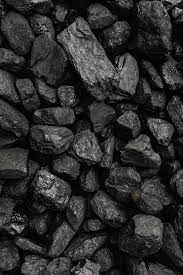
Application and Function of Carbon Black in the Rubber Industry
2024-07-25
What is Carbon Black?
Carbon black, a finely divided form of carbon, finds ubiquitous use in the rubber industry. It originates from the incomplete combustion of hydrocarbons, resulting in a powdery substance with a high surface area and remarkable physicochemical properties.
The function of Carbon Black in Rubber
Carbon black serves a multitude of functions in rubber, primarily as a reinforcing agent, imparting strength, stiffness, and resilience. It enhances resistance to abrasion, tear, and weathering, extending the lifespan of rubber products. Moreover, carbon black improves electrical conductivity, making it valuable in applications requiring antistatic properties.
Types of Carbon Black
carbon black pigment comes in various grades, each tailored to specific applications. Furnace black, the most widely used type, is produced by burning hydrocarbons in a furnace. Thermal black, another common grade, results from the thermal decomposition of natural gas. Acetylene black, known for its high purity and surface area, finds use in specialized applications.
Applications of Carbon Black in Rubber
The versatility of carbon black extends to a wide range of rubber products, including:
- Tires: Carbon black is the primary reinforcing agent in tire treads, providing strength, durability, and grip.
- Industrial rubber goods: Hoses, belts, and gaskets benefit from the reinforcing and antistatic properties of carbon black.
- Automotive parts: Carbon black enhances the performance of engine mounts, seals, and other components.
- Sports equipment: Golf balls, tennis rackets, and hockey pucks rely on carbon black for reinforcement and durability.
Benefits of Using Carbon Black in Rubber
- Improved mechanical properties (strength, stiffness, resilience)
- Enhanced abrasion, tear, and weathering resistance
- Increased electrical conductivity
- Reduced production costs
- Extended product lifespan
Step-by-Step Guide to Using Carbon Black in Rubber
- Determine the desired properties of the rubber compound.
- Select the appropriate grade of carbon black based on the desired properties.
- Add the specified amount of carbon black to the rubber compound.
- Thoroughly mix the carbon black into the rubber.
- Vulcanize the rubber to cure it.
Factors Affecting the Performance of Carbon Black in Rubber
- Particle size and surface area
- Structure and morphology
- Interaction with the rubber matrix
- Dispersion
Safety Considerations
Carbon black is generally considered safe, but precautions should be taken to minimize inhalation and skin contact. Proper ventilation and protective equipment are essential when handling carbon black.
Conclusion
Carbon black is an indispensable component of the rubber industry, providing a range of essential properties to rubber products. Its versatility and cost-effectiveness make it a preferred choice for a vast array of applications, from tires to industrial goods and sports equipment.
carbon black manufacturer
If you want to obtain high-quality carbon black resources, DERY is your best choice. Welcome to contact us for detailed ordering information and services!
Previous page:Overview of the Basic Definition and Uses of Carbon Black
Next page:Carbon Black CAS Number: 1333-86-4

